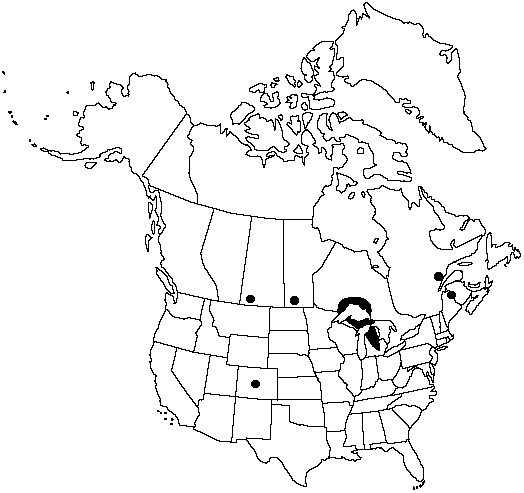Botrychium pallidum
Amer. Fern J. 80: 74. 1990.
Trophophore stalk 2–8 mm, 0–1/5 length of trophophore rachis; blade glaucous, pale green to whitish, oblong, ± longitudinally folded when alive, 1-pinnate, to 4 × 1 cm, herbaceous. Pinnae to 5 pairs, ascending, approximate, distance between 1st and 2d pinnae not or slightly more than between 2d and 3d pairs, basal pinna pair approximately equal in size and cutting to adjacent pair, fan-shaped, strongly asymmetric, lobed to divided to tip, margins entire to irregularly crenate-dentate, largest pinnae often split into 2 unequal lobes, apex rounded, venation like ribs of fan, midrib absent. Sporophores 1–2-pinnate, 1.5–4 times length of trophophore. 2n =90.
Phenology: Leaves appearing in late spring and early summer.
Habitat: Sporadic, mainly in open fields but also in shaded places
Elevation: 0–2600 m
Distribution

Man., Ont., Que., Sask., Colo., Maine, Mich.
Discussion
A usually tiny plant, Botrychium pallidum is separable from dwarfed and narrow sun forms of B. minganense by the peculiar, often folded pinnae and pale green to whitish color. It has been found growing with B. campestre, B. echo, B. hesperium, B. lunaria, B. matricariifolium, B. minganense, and B. spathulatum. Its small size may cause it to be overlooked. This is one of four moonwort species that commonly produce dense clusters of minute, spheric gemmae at the root bases.
Of conservation concern.
Selected References
None.